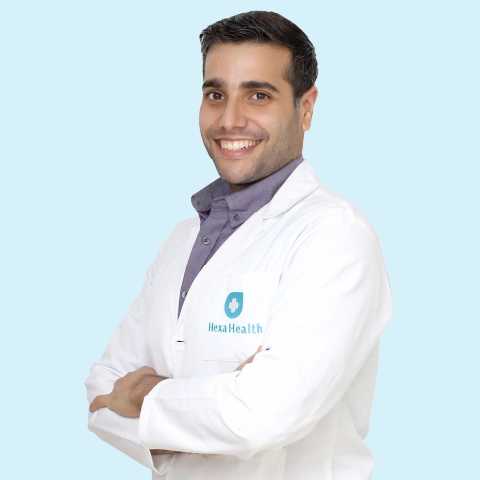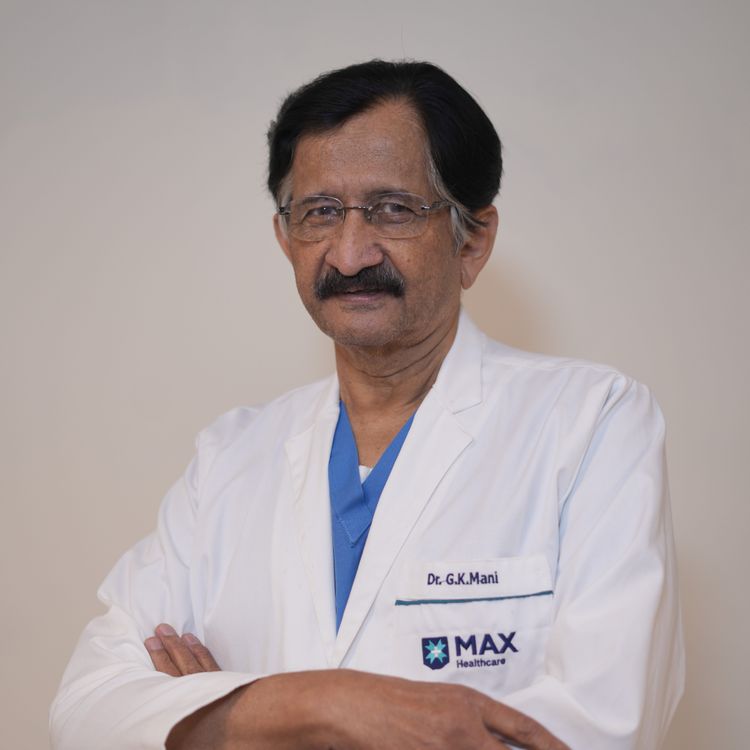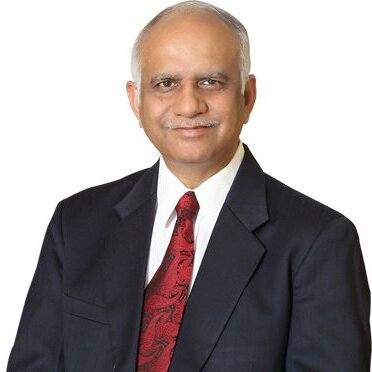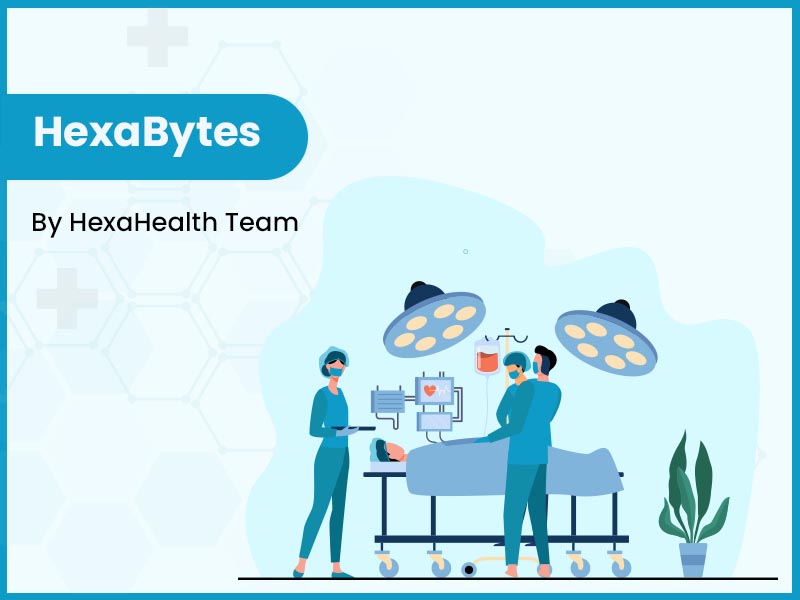What is Open Heart Surgery? - Procedure, Types, Survival Rate
Dr. Aman Priya Khanna

Treatment Duration
3 Hours
------ To ------4 Hours
Treatment Cost
₹ 3,00,000
------ To ------₹ 5,00,000

Table of Contents
- What is Open Heart Surgery?
- Conditions Treated With Open Heart Surgery
- Who Needs Open Heart Surgery?
- How is Open Heart Surgery performed?
- What to expect Before and On the day of Open Heart Surgery
- What to expect After the Open Heart Surgery?
- Benefits of Open Heart Surgery
- Risks and Complications of Open Heart Surgery
- Risks of Delaying Open Heart Surgery
- Cost of Open Heart Surgery
People suffering from heart conditions like coronary artery disease and heart failure may need to get it treated before the problem intensifies. While several new techniques have emerged to treat such conditions, open heart surgery is still regularly performed as it is a reliable method for surgeons to perform heart surgery.
Open heart surgery is a major operation performed on the heart’s muscles, arteries, or valves. After the procedure, patients need a hospital stay for a week or two.
| Procedure Name |
Open Heart Surgery |
| Alternative Name | Beating Heart Surgery and Traditional Heart Surgery |
| Conditions Treated |
Arrhythmias, Coronary artery disease, Hereditary heart defects, Heart valve disease, Heart failure, Thoracic aortic aneurysm |
| Benefits of Surgery | Life Saving, Reduce Discomfort, Decreasing the risk of cardiovascular conditions like stroke or heart attack |
| Treated By | Cardiothoracic Surgeon |
You can check Open Heart Surgery Cost here.
What is Open Heart Surgery?
Open Heart Surgery is a type of surgery performed to treat heart problems. It involves opening the chest wall, including the breastbone, for the surgeon to access the heart. The surgery is performed on the heart’s muscles, arteries, or valves. Since this surgery has been performed for decades, it is also known as traditional heart surgery.
Anatomy and Physiology of the Heart
The heart is a fist-size organ that pumps blood throughout the body. It is located at the centre of the chest, slightly pointing towards the left. It consists of the following parts:
Chambers
The heart is divided into two upper (atria) and two lower (ventricles) chambers:
- Right atrium: It pumps deoxygenated blood to the right ventricle.
- Right ventricle: Deoxygenated blood is carried by the pulmonary artery from the right ventricle to the lungs, where the blood is reloaded with oxygen.
- Left atrium: The oxygenated blood is carried from the lungs to the left atrium through pulmonary veins. The left atrium then delivers oxygenated blood to the left ventricle.
- Left ventricle: It pumps oxygen-rich blood to the body.
Valves
- Heart valves open and close to allow the flow of blood.
- The atrioventricular valves open between the upper and lower heart chambers.
- The semilunar valves open when blood flows out of the ventricles.
Blood Vessels
The heart pumps blood through three blood vessels:
- Arteries (carry oxygenated blood from the heart to the body)
- Veins (carry deoxygenated blood to the heart)
- Capillaries (small blood vessels where the body exchanges oxygenated and deoxygenated blood)
Expert Doctors (10)
NABH Accredited Hospitals (10)


Conditions Treated With Open Heart Surgery
A doctor may suggest open heart surgery to treat the following heart conditions:
- Arrhythmias (irregular heartbeat)
- Coronary artery disease (narrowing or blockage of the coronary arteries due to plaque buildup)
- Hereditary heart defects (such as underdeveloped heart structures or a hole in the heart)
- Heart valve disease (damaged or diseased valve in the heart)
- Heart failure (heart does not pump enough blood)
- Thoracic aortic aneurysm (a weakened area in the aorta wall)
Who Needs Open Heart Surgery?
An open heart surgery is ideal for patients who need the following:
- Repair or replace their heart valves
- Repair the damaged or abnormal heart areas
- Heart transplantation
- Medical device implantation for proper heartbeats
A person is an ideal candidate for open heart surgery if they:
- Are in a good physical condition
- Follow post-operative instructions
- Do not smoke
How is Open Heart Surgery performed?
Open heart surgery is a complex surgery that may take four hours or longer. The steps involved in the surgery may vary depending on the procedure. Some general steps for the surgery include:
Preparation for the Open Heart Surgery
- In the OT, the patient will lie in a supine position (lying horizontally on the back with the face pointing up) on the operating table.
- The anesthesiologist will start an IV line in the patient’s arms or hands for fluids and medications.
- They will administer general anaesthesia to make the patient sleep throughout the procedure.
- The team will insert a breathing tube down the patient’s windpipe.
- The nursing team will clean the surgical site with antimicrobial soap.
- The anaesthesiologist will monitor the patient’s vitals, like heart rate, blood pressure, and breathing, throughout the procedure.
The Final Surgery
- The surgeon will make a six- to eight-inch-long incision in the middle of the chest.
- They will cut the patient’s breastbone and spread the ribcage apart to expose the heart.
- Once the heart is visible, the surgeon will connect it to a heart-lung bypass machine in case of an on-pump surgery. The machine takes over the heart’s pumping action and diverts blood from the heart through tubes.
- The anaesthesiologist will inject IV medication to stop the patient’s heart from beating, allowing the surgeon to operate.
- The surgeon will restore blood flow to the heart and disconnect the heart-lung bypass machine.
- The surgeon will close the breastbone with sutures and wires left inside the body.
- Finally, the skin incision will be closed using stitches.
Types of Open Heart Surgery
The various types of open heart surgery include:
- Coronary Artery Bypass Grafting (CABG): Also known as heart bypass or coronary bypass surgery, it is the most common open heart surgery performed today for patients suffering from coronary heart disease and atherosclerosis. In this procedure, the surgeon uses a healthy vein or artery from another body part and creates a new path around the blocked artery.
- Heart valve repair or replacement: To replace a damaged heart valve, the surgeon may replace the natural valve with an artificial one. For a valve repair, the procedure depends on the type of valve problem. For instance, the surgeon may insert a catheter into a blood vessel and inflate a balloon to reshape the valve and ensure better function.
- Heart transplant: It is a surgery in which the surgeon replaces a failing heart with a healthier donor heart. The procedure is usually reserved for patients whose condition does not improve with medication and other surgeries.
- Inserting an implantable cardioverter-defibrillator (ICD) or a pacemaker: ICDs and pacemakers are implanted in the patient’s chest to monitor and control irregular heartbeats.
Please note: The procedure selection is based on the patient’s condition and the surgeon’s opinion.
What to expect Before and On the day of Open Heart Surgery
Before open heart surgery
The patient will meet the doctor to perform some tests and discuss the do's and don’ts for surgery preparation. Here’s what the patient can expect before the surgery:
Consultation and Evaluation
- The patient will have a Pre-Anaesthetic Check Up (PAC) with an anesthesiologist.
- The doctor will evaluate the patient’s medical history and perform tests such as chest X-rays and electrocardiogram (EKG) to plan the surgery.
- Based on the surgery and the PAC results, the anaesthesiologist will decide the type of anaesthesia to be administered.
- The patient must inform the doctor about any illnesses they have, such as cold, flu, fever, or herpes outbreak.
- Furthermore, they should inform the doctor about their medications, including over-the-counter, prescribed medicines, supplements, and herbs.
- After receiving clearance, the doctor will appoint a date for the surgery.
- The doctor will briefly explain the duration, hospital stay, estimated cost, and insurance formalities.
Restrictions
- The patient will be asked to quit smoking and limit alcohol consumption several weeks before the surgery.
- The patient will be asked to stop taking certain blood thinners and nonsteroidal anti-inflammatory drugs (NSAIDs) a week or two before surgery.
- The doctor will ask him/her not to drink or eat anything after midnight.
On the Day of Open Heart Surgery
The following is what the patient can expect on the day of the procedure:
- The hospital team will ask the patient to sign consent formalities before the procedure.
- The patient must change into the hospital gown and remove all jewellery pieces.
- The nursing team will shave the excess hair on the patient’s chest.
- The doctor will record the patient’s last meal and give medicine to be taken with a sip of water.
- The anaesthesiologist will monitor the patient’s vital signs, such as heart rate, breathing, and blood pressure.
- The team will shift the patient to the OT room.
What to expect After the Open Heart Surgery?
After the Open Heart Surgery
The patient will stay in the hospital for several days. Here’s what they can expect in the hospital after the procedure:
- The team will shift the patient to the recovery room, where the anaesthesiologist will monitor the vitals and anaesthesia effect.
- Once the patient’s vitals stabilise, they will be moved to the Intensive Care Unit (ICU) for a day or longer.
- After a day or two, the patient will be moved to a general ward or hospital room for three to seven days.
- The patient will get discharged from the hospital once their condition stabilises.
- The doctor will offer several home care and follow-up instructions.
Open Heart Surgery Recovery at Home
The initial recovery from open heart surgery can take six to eight weeks. Home care instructions after open heart surgery include:
Incision Care
- The bandages and strips should be left on for the first two days unless the wound oozes.
- Keep the incision dry and clean.
- Wash hands before and after touching the incision.
- Wash the incision gently with mild soap and pat it dry.
- Regularly check the incision for signs of infection, such as redness, warmth, fever, and increased drainage from the incision site.
- Ensure protection of the open heart surgery scar from direct sunlight for up to a year after surgery.
Showering
- The patient can shower if the incision is healing properly and there is no drainage.
- The shower with warm water should be at most ten minutes.
- The incision site should not be directly hit with water.
Pain Management
- It is common to experience throat pain, muscle pain, pain from chest tubes, or pain at the incision site after the procedure.
- To manage pain, the doctor may prescribe over-the-counter pain medications like acetaminophen and NSAIDs.
Sleep
- It is important to get enough rest after open heart surgery.
- To get better sleep, the patient can take pain medication half an hour before bed and use a firm pillow to protect the chest and decrease muscle strain.
Diet
- Eat nutritious meals with proteins, whole grains, vegetables, and fruits to support healing.
- Avoid foods rich in sodium and saturated fat.
- Avoid caffeine, especially in the evening.
Activities
- Unless the surgeon says otherwise, the patient can return to activities like walking, cooking, climbing stairs, light cleaning, and washing dishes.
- The patient can return to work six to eight weeks after the surgery unless the job is physically strenuous.
Restrictions
- Avoid driving for four weeks after the surgery.
- Avoid lifting anything heavier than 4.5 kg for about six weeks.
Rehabilitation
- These outpatient visits include exercise, reducing risk factors, and dealing with anxiety, stress and depression.
- The patient will need to participate in such a rehabilitation program several times a week.
First Follow-Up Appointment
- The first follow-up appointment after an open heart surgery is scheduled within three to seven days, where the healthcare provider checks for signs of infection and other vitals like blood pressure and heart rate.
- An additional follow-up will be required after six to eight weeks, where the doctor will monitor how well the patient’s heart is working. They will also provide further instructions for activities that can be performed safely.
Benefits of Open Heart Surgery
There are several benefits of open heart surgery, especially for patients suffering from serious cardiovascular disease:
- It can save the lives of patients suffering from a heart attack or those at a high risk of having one.
- It can help reduce discomfort caused by shortness of breath and ongoing angina due to diseased heart arteries.
- After recovery from the surgery, patients will feel stronger, healthier, and ready to do things they love.
Risks and Complications of Open Heart Surgery
Since open heart surgery is a major operation that even requires stopping the heart in several cases, it carries certain risks and complications. The common side effects of open heart surgery include:
- Allergic reaction to anaesthesia
- Bleeding
- Blood clots
- Infections in the incision or inside the chest (more common in patients with diabetes, obesity, and chronic kidney disease)
- Pneumonia
Complications specific to open heart surgery include:
- Heart attack or stroke
- Arrhythmia
- Lung or kidney failure
- Chest pain
- Memory loss
- Breathing difficulty
Sequelae of complications, if not treated in time, include:
- A heart attack, if not treated promptly, can cause permanent heart damage or even death.
When to Consult a Doctor?
The patient should call the healthcare professional if they experience the following:
- A fever of more than 101℉
- Nausea and vomiting
- Chest pain
- Shortness of breath
- Signs of infection, such as redness and oozing from the incision
- Signs of stroke, such as trouble speaking, numbness, or loss of balance
Risks of Delaying Open Heart Surgery
An open heart surgery may produce the best results only when done at the right time. Unnecessarily delaying the procedure can increase the chances of permanent heart weakness, making the surgery riskier and less effective.
Cost of Open Heart Surgery
Being a major operation, the average open heart surgery cost can be extremely high. The cost of the procedure can range from Rs. 1,80,000 to Rs. 2,50,000, depending on various factors, such as:
- Type of hospital (Government, private, or trust)
- Type of city (the cost is higher in metro cities)
- The kind of technology used
- The type of surgery
- Surgeon’s experience and qualifications
- The general health and fitness of patients
- The type of room selected
- The reputation of the hospital
| Procedure Name | Cost Value |
| Open Heart Surgery | 1,80,000 to Rs. 2,50,000 |
The Average Cost of the Most Common Open Heart Procedures
| Procedure |
Average Cost |
| Coronary Artery Bypass Grafting (CABG) | Rs. 95,000 to Rs. 4,50,000 |
|
Heart Valve Repair or Replacement |
Rs. 3,00,000 to Rs. 5,00,000 |
|
Implantation of a Pacemaker or ICD |
Rs. 2,75,000 to Rs. 5,50,000 |
|
Heart Transplant |
Rs. 20,00,000 to Rs. 25,00,000 |
Frequently Asked Questions (FAQ)
What are some Myths and Facts about Open Heart Surgery?
- Myth: Open heart surgery is very risky.
Fact: With advancements in technology today, a well-planned open heart surgery like bypass surgery or valve replacement surgery carries very few risks. The open heart surgery success rate is more than 95% if performed at an appropriate time. - Myth: The surgery includes taking the heart out of the patient’s chest.
Fact: Not true! The heart is only stopped by connecting a heart-lung bypass machine to help perform the surgery. It is never taken out of the chest. Heart transplantation is the only procedure that involves the physical removal of the heart from the chest. - Myth: Open heart surgery is extremely painful.
Fact: The patient is given general anaesthesia to make them sleep throughout the procedure. Therefore, the patients will experience no pain during the surgery. Moreover, a painkiller can also help them manage pain and discomfort in the recovery phase after the surgery.
What is open heart surgery?
An open heart surgery is an operation in which the chest is opened to perform surgery on the heart muscles, arteries, or valves. The procedure treats heart problems like arrhythmias, congenital heart defects, heart failure, and aneurysms.
How serious is open heart surgery?
How is open heart surgery done?
In open heart surgery, the surgeon cuts the centre of the chest and spreads the rib cage to expose the heart. After opening the chest, the surgeon attaches a heart-lung machine to circulate blood and stops the heart temporarily. Once the problem is treated, the surgeon restores the functioning of the heart, removes the machines, and closes the incision.
What is the survival rate after open heart surgery?
Open heart surgery is a successful procedure that offers a new life to people. The one-year survival rates after open heart surgery are 96-97%.
Is CABG an open heart surgery?
How long is open heart surgery?
How long does a patient stay in the hospital after open heart surgery?
Patients undergoing open heart surgery must stay in the hospital for about seven to ten days. During this duration, the doctor monitors the progress and checks for any signs of infection.
How long are you in ICU after open heart surgery?
What are the dangers after open heart surgery?
Some open heart surgery risks include:
- Bleeding
- Arrhythmia
- Blood loss
- Blood clots
- Chest wound infection
- Heart attack
- Stroke
- Lung or kidney failure
- Memory loss
- Breathing difficulty
Do they break your ribs for open heart surgery?
Open heart surgeries require opening the chest to access the heart. To reach the heart, surgeons cut through the breastbone and spread the ribs.
Can you feel open heart surgery?
No. Since the procedure is performed under general anaesthesia, you will feel no pain during the surgery.
Can you go home alone after open heart surgery?
After open heart surgery, the body takes several weeks to heal. You cannot go home alone after the surgery, as driving will be restricted for about four weeks. You may also need someone to stay with you until you resume your normal household activities.
Can a person normally live after open-heart surgery?
Yes, once the patient recovers, he/she can live a normal life and resume his/her normal activities. Open heart surgery is an effective way of giving people a new life.
How painful is open-heart surgery?
Open heart surgery is not at all painful because the surgery is performed under general anaesthesia. The patient will sleep throughout the process and not remember anything.
Is the heart still beating during open-heart surgery?
Open heart surgery can be performed in two ways. In an on-pump surgery, the heart is temporarily stopped while you are connected to a heart-lung bypass machine. However, in an off-pump surgery, the heart keeps beating during the surgery.
Who is at high risk for open heart surgery?
Is open heart surgery a major surgery?
Yes, open heart surgery is a major procedure that involves opening the chest to reach the heart. The surgery is also performed to treat life-threatening conditions like heart attack and heart failure. Like all other surgeries, open heart surgery has some potential risks and complications.
Can a heart valve be replaced without open heart surgery?
Yes, with technological advancements, heart valve replacement can now also be performed without open heart surgery. Transcatheter aortic valve replacement (TAVR) is a minimally invasive procedure for replacing damaged heart valves. The procedure is suitable for people with moderate to high risk of developing open heart surgery complications.
More Treatment options
Last Updated on: 9 February 2024
Reviewer

Dr. Aman Priya Khanna
MBBS, DNB General Surgery, FMAS, FIAGES, FALS Bariatric, MNAMS General Surgery
13 Years Experience
Dr Aman Priya Khanna is a highly experienced and National Board–Certified Laparoscopic, GI, and Bariatric Surgeon with over 13 years of clinical expertise.
He is widely regarded as one of the best bariatric surgeons in Ahmedabad, ...View More
Author

Rajath R Prabhu
MSc. Clinical Research I PG Diploma in Public Health Services Management
3 Years Experience
His work in medical content writing and proofreading is noteworthy. He has also contributed immensely to public health research and has authored four scientific manuscripts in international journals. He was assoc...View More
Open Heart Surgery Cost in Top Cities
Latest Health Articles











 Kumud Rai max ppgn)












